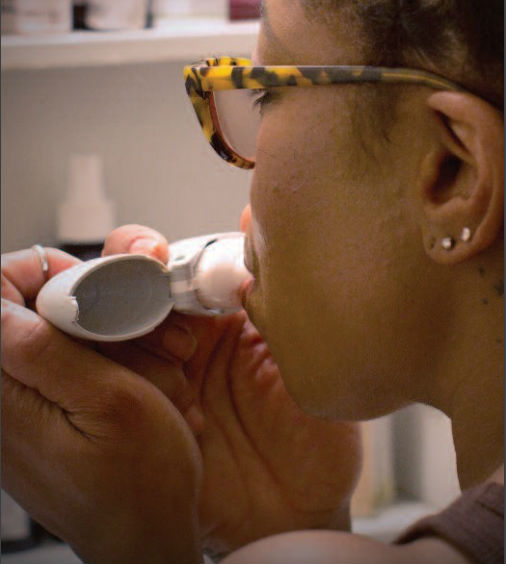 The Health Department today released a new report on New York City (NYC) smoking trends before, during, and after pregnancy. Smoking during pregnancy has well known harmful effects that include premature birth and an elevated risk of certain birth defects. Infant and/or child exposure to secondhand smoke are associated with a higher risk of respiratory tract and ear infections, Sudden Infant Death Syndrome (SIDS), and asthma exacerbations. Since the Health Department implemented a citywide comprehensive tobacco control program in 2002, smoking prevalence among adults ages 18 and older in NYC has decreased from 22 percent in 2002 to 14 percent in 2014. The report can be found on the agency’s website, nyc.gov/health.
The Health Department today released a new report on New York City (NYC) smoking trends before, during, and after pregnancy. Smoking during pregnancy has well known harmful effects that include premature birth and an elevated risk of certain birth defects. Infant and/or child exposure to secondhand smoke are associated with a higher risk of respiratory tract and ear infections, Sudden Infant Death Syndrome (SIDS), and asthma exacerbations. Since the Health Department implemented a citywide comprehensive tobacco control program in 2002, smoking prevalence among adults ages 18 and older in NYC has decreased from 22 percent in 2002 to 14 percent in 2014. The report can be found on the agency’s website, nyc.gov/health.
“We’re proud to see overall decreases in smoking around pregnancy and increases in quitting during pregnancy over time, but the data clearly show there are disparities in who relapses and starts smoking again after pregnancy,” said Mayor Bill de Blasio. “We will continue to aggressively combat the tobacco epidemic by increasing access to information and resources for all New Yorkers to ultimately save lives.”
“I am pleased to see a downward trend in smoking rates for women around the time of their pregnancy, but pre-pregnancy rates remain too high, especially in white women, and the disparities in quitting and relapse among women of color and those with less education are concerning,” said Health Commissioner Dr. Mary T. Bassett. “We have to do more to make sure all women have the resources and support needed to quit smoking and quit for good. I encourage health care providers to discuss the risks of smoking and smoke exposure with all women of reproductive age, and provide counseling when necessary.”
“We are encouraged to see declines in the overall prevalence of smoking around the time of pregnancy. However, disparities in quitting and relapse highlight the need to increase access to cessation resources and address underlying factors that contribute to relapse, such as poverty and other life stressors,” said Dr. George L. Askew, Deputy Commissioner for the Health Department’s Division of Family and Child Health.
“This report includes some positive trend lines and some encouraging news,” said Council Member Corey Johnson, Chair of the Committee on Health. “Women are smoking less frequently during pregnancy and smoking less frequently after giving birth. However, the percentage of women who smoke during pregnancy is still far too high, and the disparities between communities are unacceptable. I look forward to assisting the Health Department in addressing this issue and making sure that parents have the knowledge and resources that will help them make the best decisions for their kids. I thank the Department of Health and Mental Hygiene for taking a leading role on this important issue.”
“Smoking, particularly amongst new and expectant mothers, poses a great risk to the health and wellbeing of both mother and child. Through the incredible efforts of the New York City Department of Health and Mental Hygiene, we have made notable gains to become a smoke-free city.Despite the steady decline in women who smoke and life-threatening illnesses, we must ensure that these gains are reflected across all demographics by expanding access to the resources and supportive services that will help New Yorkers quit smoking and prevent future relapses,” said Council Member Laurie A. Cumbo, chair of the Committee on Women’s Issues.
“It’s welcome news that tobacco use is on the decline in New York City. Mayor de Blasio’s administration has kept New York a national leader in the fight against smoking,” said Assembly Member Richard N. Gottfried, Chair of the Assembly Committee on Health. “It’s especially encouraging that smoking rates are declining among women before, during, and after pregnancy. Public health leadership works, and local and State health authorities need to redouble their efforts to address disparities in smoking cessation for women of color and those with less education.”
“This report is the latest to confirm the effectiveness of New York City’s efforts to combat the tobacco epidemic and remind us of the significant disparities in tobacco use and exposure that persist for too many New Yorkers of different social, economic, and racial/ethnic groups. NYC has been a leader in putting in place best practices in comprehensive tobacco control that have dramatically saved lives and prevented smoking addiction. We must now invest in more comprehensive approaches that build health equity and reach all New Yorkers,” said Patrick Kwan, Director of NYC Smoke-Free at Public Health Solutions.
Smoking Before Pregnancy
From 2004 to 2011, the proportion of women who smoked in the three months before pregnancy decreased from 14 percent to 11 percent, led by decreases in White non-Hispanic and Hispanic women. In 2011, NYC achieved the Healthy People (HP) 2020 goal of less than 14 percent of women smoking before pregnancy.
In 2011, White non-Hispanic women had the highest prevalence of smoking before pregnancy (15%), followed by Black non-Hispanic (10%), Hispanic (9%) and Asian/Pacific Islander (3%) women.
Smoking During Pregnancy
From 2004 to 2011, the percentage of women who smoked during the last three months of pregnancy dropped from 8 percent to 2 percent, with decreases across all groups defined by race/ethnicity, education, and Medicaid status. New York City is close to meeting the HP 2020 goal of less than 1.4 percent of pregnant women smoking.
From 2004 to 2011, the proportion of women who smoked three months before pregnancy but who quit smoking by the end of pregnancy increased from 46 to 82 percent. NYC surpassed the HP 2020 goal of 30 percent for women who smoked before pregnancy and quit while pregnant. However, smoking cessation rates were lower among Black non-Hispanic and Hispanic women compared with White non-Hispanic women, women with some college or less, and women enrolled in Medicaid.
Smoking After Pregnancy
Among women who quit smoking during pregnancy, the proportion of women who relapsed after delivery decreased from 73 percent in 2004 to 49 percent in 2011. Black non-Hispanic women were more likely to relapse compared with White non-Hispanic women (63% vs. 43%).
Women were less likely to smoke after delivery in 2011 than in 2004 (6% vs. 12%). From 2004 to 2011, smoking rates after delivery dropped among White non-Hispanic and Hispanic women. Among women who smoked after delivery, the proportion of heavy smokers decreased from 18 percent in 2004 to 5 percent in 2011.
Quit Smoking Resources for Expecting and New Mothers:
New and expecting mothers should talk to their doctor about how they can quit smoking. Tools and resources on how to quit smoking and cope with withdrawal are available on nyc.gov, by searching NYC Quits, or following this link to access a cessation guide. Expecting and new mothers should also consider the following programs:
- Medicaid Cessation: The promotion of the Medicaid cessation benefit has been a key part of reducing inequities among smokers – a key disparity being among education levels. Information on this program can be found here.
- ESCAPE: This is free resource available for all eligible New York City government employees who would like to quit smoking. Enrollment information can be found here.
Recommendations to Providers:
· Obstetricians, pediatricians, gynecologists, internists, family physicians, and other providers should discuss tobacco use with their patients before, during, and after pregnancy.
- Providers can download the Health Department’s “Help Your Pregnant and Postpartum Patients Quit Smoking: A Coaching Guide” here.
- A thorough guide of city and state cessation resources for consumers and providers can be found here. This guide includes information on NYC Quits, NYC Treats Tobacco, and the BigAppleRx Prescription Discount Card – a free card that provides discounts on cessation medication.
Via health.nyc.gov
Become a Harlem Insider!
By submitting this form, you are consenting to receive marketing emails from: Harlem World Magazine, 2521 1/2 west 42nd street, Los Angeles, CA, 90008, https://www.harlemworldmagazine.com. You can revoke your consent to receive emails at any time by using the SafeUnsubscribe® link, found at the bottom of every email. Emails are serviced by Constant Contact








